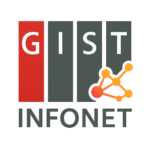Introduction to Compressed Sensing
Instructor: Prof. Heung-No Lee
Email: heungno@gist.ac.kr
This course was offered in the Spring semester 2011 at GIST.
| Here is the lecture note Book_CS.pdf for this course. Here is the presentation of professor Heung-No Lee presented at PSIVT 2011 Overview of Compressed Sensing |
Course Syllabus
| 1 | Introduction to Compressive Sensing, Shannon Nyquist Sampling Theorem
|
|
| 2 | Comparison of L0, L1, L2 solutions, application of sparse representation theory in filter array based spectrometers | HW#1 |
| 3 | Compressive Sensing Theory: L0 and L1 equivalence, The Spark = Dmin of parity check matrix, The Singleton bound, Givens Rotation based Matrix Design | |
| 4 | Compressive Sensing Mathematics: Generalized Uncertainty Principle, Sparse Representation, conditions for the unique ell-0 solution, and the unique ell-1 solution, the Donoho approach
|
HW#2 |
| 5 | Compressive Sensing Mathematics: conditions for the ell-0 solution, and the unique ell-1 solution, the Candes-Tao approach.
|
|
| 6 | Compressive Sensing Mathematics: Sensing matrices and oversampling factors | HW#3 |
| 7 | Stable Recovery | |
| 8 | Midterm Exam | |
| 9 | Recovery Algorithm I : Homotopy, LASSO, LARs , OMP. | HW#4 |
| 10 | Recovery Algorithm II : ell-1 minimization , SOCP, Message Passing Algorithm s | |
| 11 | Class Presentations #1/#2/#3 | HW#5 |
| 12 | Connection to the Shannon TheoryClass Presentations #4/#5/#6 | |
| 13 | The Rate Distortion TheoryClass Presentations #7/8/9 | HW#6 |
